Why is Russia invading Ukraine and what does Putin want?
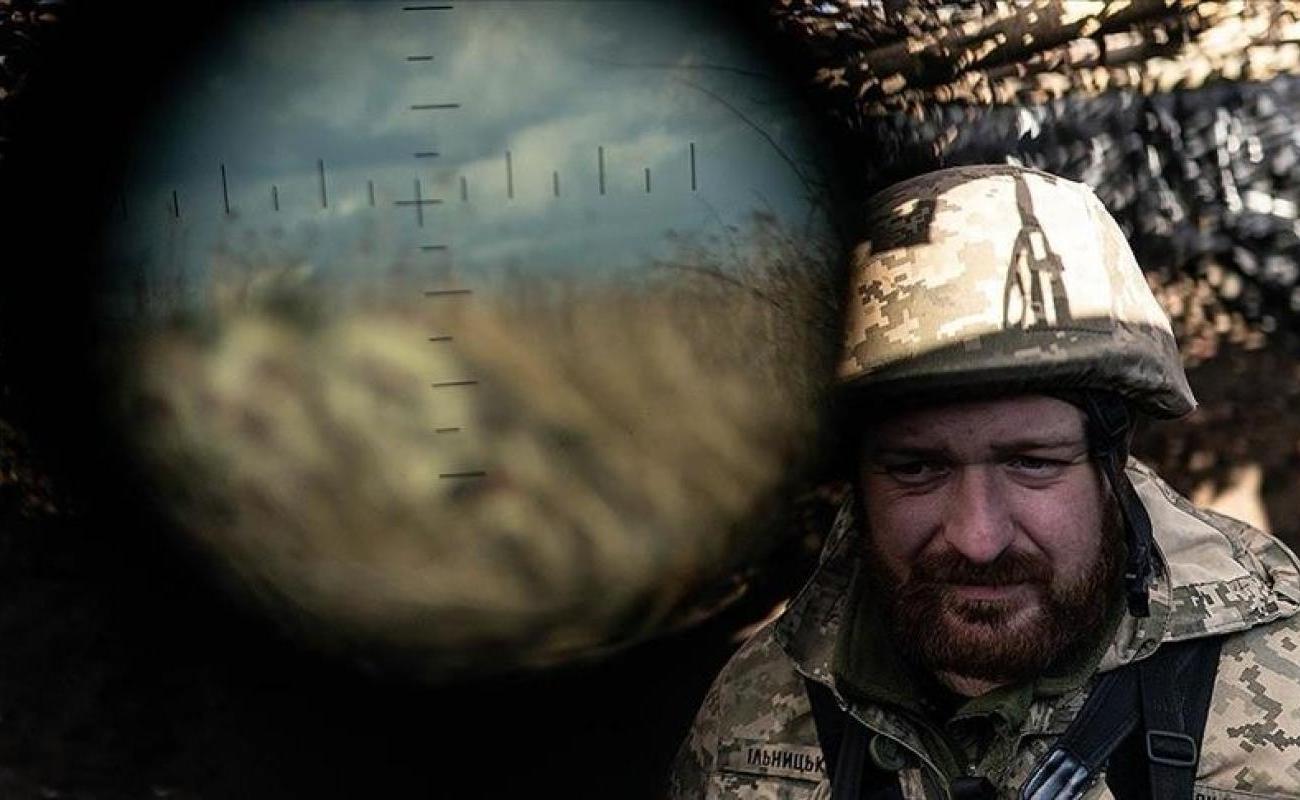
By air, land, and sea, Russia has launched a devastating attack on Ukraine, a European democracy of 44 million people. For months President Vladimir Putin had denied he would invade his neighbour, but then he tore up a peace deal, sending forces across borders in Ukraine's north, east and south.
As the number of dead climbs, he is now accused of endangering peace in Europe and what happens next could jeopardise the continent's entire security structure.
Where have Russian troops attacked and why?
Airports and military headquarters were hit first, near cities across Ukraine, including the main Boryspil international airport in Kyiv. Then tanks and troops rolled into Ukraine in the north-east, near Kharkiv, a city of 1.4 million people; in the east near Luhansk, and from neighbouring Belarus in the north. Russian troops landed in Ukraine's big port cities of Odesa and Mariupol too.
Moments before the invasion began, President Putin went on TV declaring that Russia could not feel "safe, develop and exist" because of what he called a constant threat from modern Ukraine.


Many of his arguments were false or irrational, as he claimed his goal was to protect people subjected to bullying and genocide and aim for the "demilitarisation and denazification" of Ukraine. There has been no genocide in Ukraine and it is a vibrant democracy led by a president who is Jewish. "How could I be a Nazi?" said Volodymr Zelensky, who likened Russia's onslaught to Nazi Germany's invasion in World War Two.
President Putin has frequently accused Ukraine of being taken over by extremists, ever since its pro-Russian president, Viktor Yanukovych, was ousted in 2014 after months of protests against his rule. Russia then retaliated by seizing the southern region of Crimea and triggering a rebellion in the east by Russian-backed separatists who have fought Ukrainian forces in a war that has claimed 14,000 lives.
Late in 2021 he began deploying big numbers of Russian troops close to Ukraine's borders. Then this week he scrapped a 2015 peace deal for the east and recognised areas under rebel control as independent.
Russia has long resisted Ukraine's move towards the European Union and the West's defensive military alliance Nato. Announcing Russia's invasion, he accused Nato of threatening "our historic future as a nation".
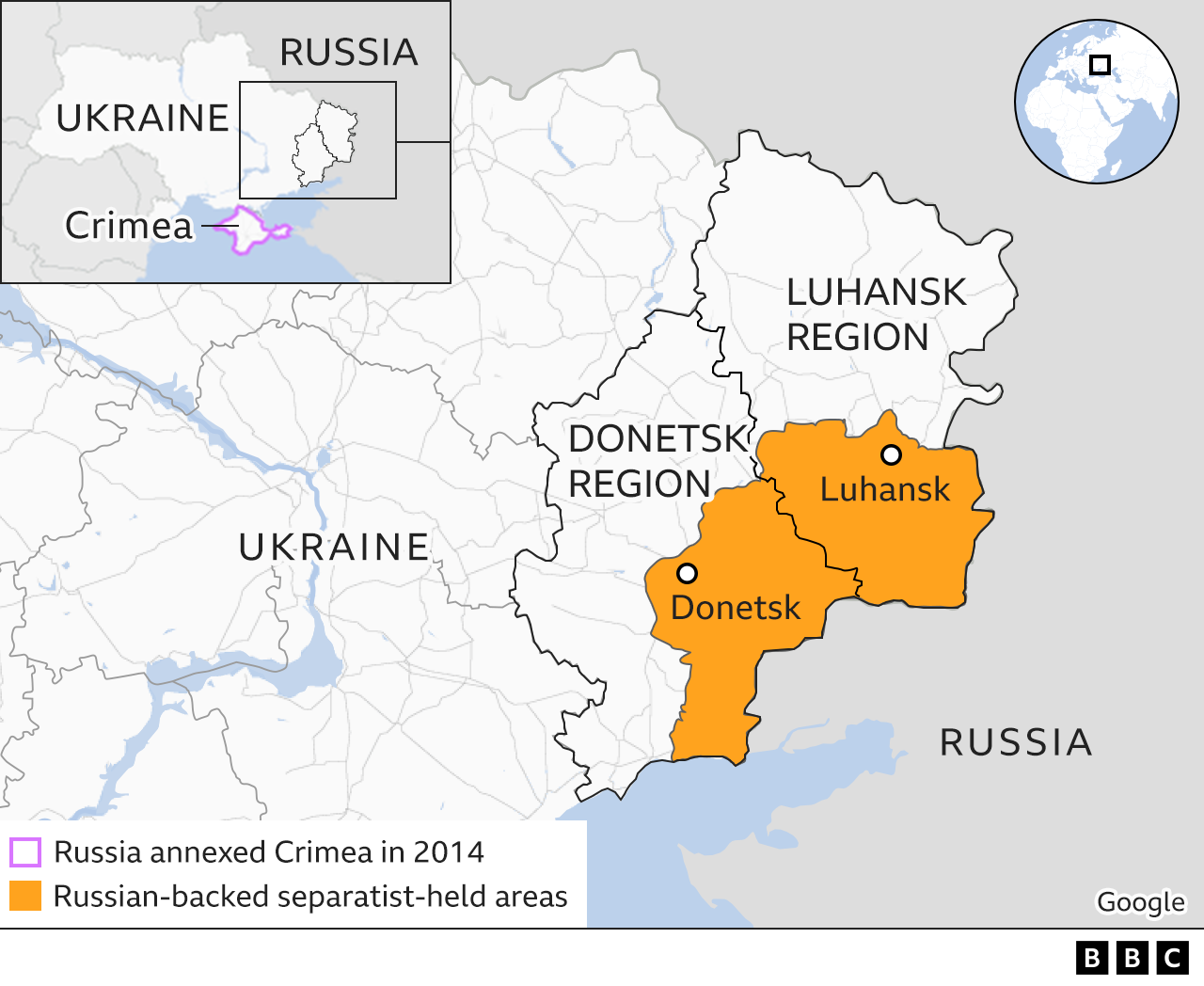

How far will Russia go?
For now it is unclear if Russia's leader seeks to overthrow Ukraine's democratically elected government. The Kremlin has refused to say, although it believes that ideally Ukraine should be "freed, cleansed of the Nazis".
However, by invading from Belarus and near Kharkiv in the north Mr Putin has indicated his aims go well beyond the eastern areas hit by eight years of war.
In the days before the invasion, when up to 200,000 troops were within reach of Ukraine's borders, he had focused his attention on the east.
By recognising the Russian proxy statelets of Luhansk and Donetsk as independent, he had already decided they were no longer part of Ukraine. Then he revealed that he supported their claims to far more Ukrainian territory. The self-styled people's republics cover little more than a third of the whole of Ukraine's Luhansk and Donetsk regions but the rebels covet the rest too.
"We recognised them, didn't we, and this means we recognised all of their founding documents," said the Russian leader. He did not merely recognise them, he signed a decree allowing Russian troops to be openly stationed there and for military bases to be built too.
How dangerous is this invasion for Europe?
These are terrifying times for the people of Ukraine.
Dozens have died already in what Germany has dubbed "Putin's war", both civilians and soldiers. And for Europe's leaders this invasion has brought some of the darkest hours since World War Two.
For the families of both armed forces there will be anxious days ahead. Although invading its neighbour was rubber-stamped by Russia's upper house of parliament, this is not a war that Russia's population was prepared for.
Top US military official Mark Milley said the scale of Russian forces would mean a "horrific" scenario with conflict in dense urban areas.


Ukraine has built up its armed forces in recent years and Russia faces a hostile population. The military has called up all reservists aged 18 to 60 years old.
In the words of German Chancellor Olaf Scholz: "There is no justification. This is Putin's war."
But the invasion has knock-on effects for many other countries bordering both Russia and Ukraine. Latvia, Poland and Moldova say they are preparing for an influx of refugees. Moldova and Lithuania have declared a state of emergency.
What can the West do?
Nato has put warplanes on alert but the Western alliance has made clear there are no plans to send combat troops to Ukraine itself. Instead they have offered Ukraine advisers, weapons and field hospitals. Meanwhile, 5,000 Nato troops have been deployed in the Baltic states and Poland. Another 4,000 could be sent to Romania, Bulgaria, Hungary and Slovakia.
Instead, the West has focused on measures against Russia's finance and some individuals. Immediately after Mr Putin tore up the 2015 Minsk peace deal with Ukraine, a raft of sanctions were imposed with further measures held back in the hope that Russia would not attack:
- Germany halted approval on Russia's Nord Stream 2 gas pipeline, a major investment by both Russia and European companies
- The EU agreed broad sanctions that include all 351 MPs who voted for Russia's "illegal decision" to recognise the rebel-held regions as independent states
- The US said it was cutting off Russia's government from Western financial institutions and targeting high-ranking "elites"
- The UK targeted five major Russian banks and three billionaires
The three Baltic states have now called on the whole international community to disconnect Russia's banking system from the international Swift payment system. That could badly impact the US and European economies.
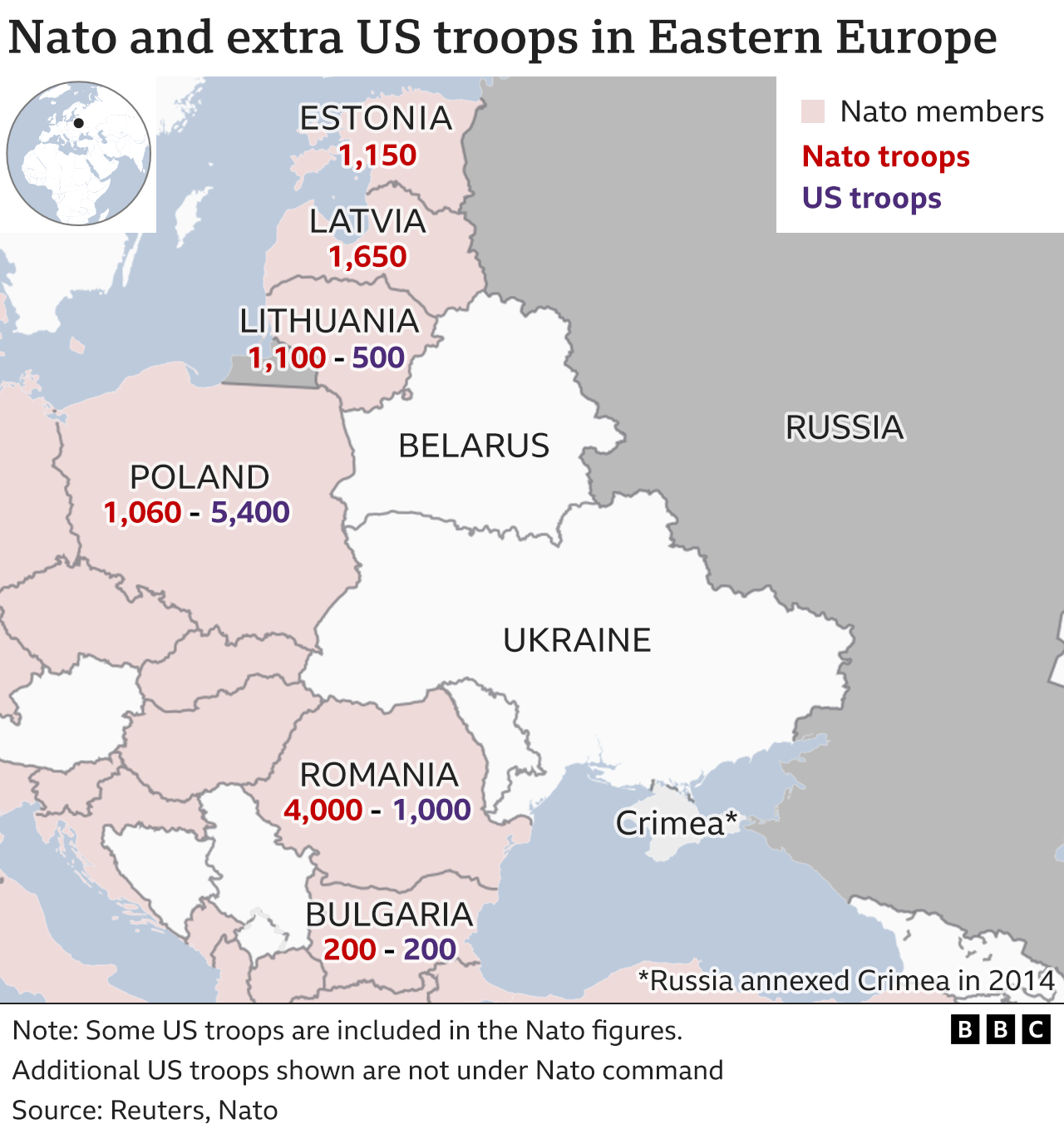

What does Putin want?
In the weeks and months before the invasion, Russia spelt out a series of demands for "security guarantees" from the West, most of them involving Nato. And President Putin partly blamed his decision to attack on Nato's eastward expansion. He had earlier complained Russia has "nowhere further to retreat to - do they think we'll just sit idly by?"
"For us it's absolutely mandatory to ensure Ukraine never, ever becomes a member of Nato," said Deputy Foreign Minister Sergei Ryabkov.
Mr Putin's other core demands are that Nato does not deploy "strike weapons near Russia's borders", and that it removes forces and military infrastructure from member states that joined the alliance from 1997.
That means Central Europe, Eastern Europe and the Baltics. In reality Russia wants Nato to return to its pre-1997 borders.
 IMAGE SOURCE,EPA
IMAGE SOURCE,EPALast year President Putin wrote a long piece describing Russians and Ukrainians as "one nation", and he has described the collapse of the Soviet Union in December 1991 as the "disintegration of historical Russia". He has claimed modern Ukraine was entirely created by communist Russia and is now a puppet state, controlled by the West.
President Putin has also argued that if Ukraine joined Nato, the alliance might try to recapture Crimea.
Let's imagine Ukraine is a Nato member and starts these military operations. Are we supposed to go to war with the Nato bloc? Has anyone given that any thought? Apparently not

What has Nato said?
Nato is a defensive alliance with an open-door policy to new members, and its 30 member states are adamant that will not change.
Ukraine's president has called for "clear, feasible timeframes" to join Nato, but there is no prospect of it happening for a long time, as Germany's chancellor has made clear.
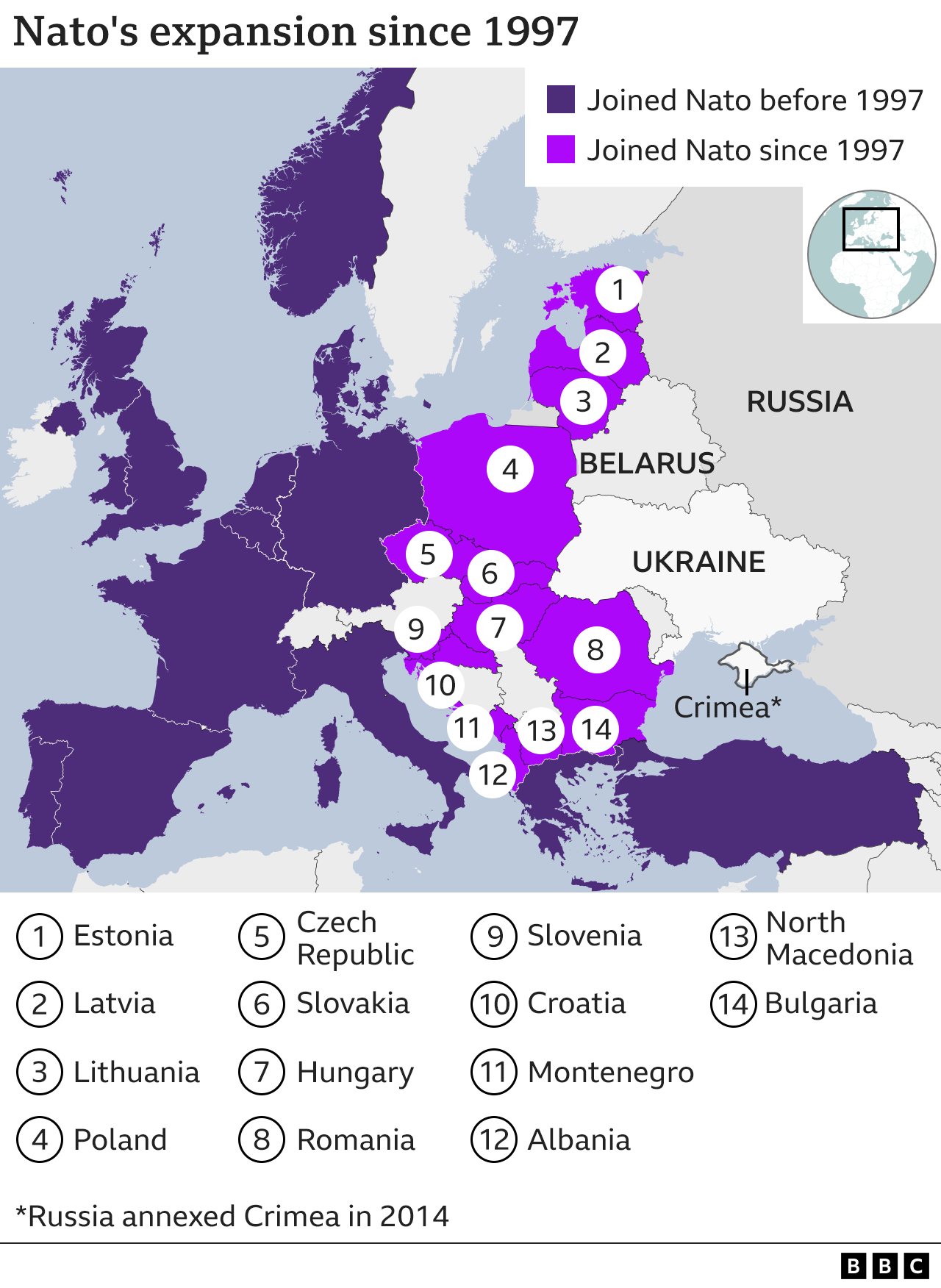

The idea that any current Nato country would give up its membership is a non-starter.
In President Putin's eyes, the West promised back in 1990 that Nato would expand "not an inch to the east" but did so anyway.
That was before the collapse of the Soviet Union, however, so the promise made to then Soviet President Mikhail Gorbachev only referred to East Germany in the context of a reunified Germany.
Mr Gorbachev said later "the topic of Nato expansion was never discussed" at the time.
Is there a diplomatic way out?
Not for now, but any eventual deal would have to cover both the war in the east and arms control.
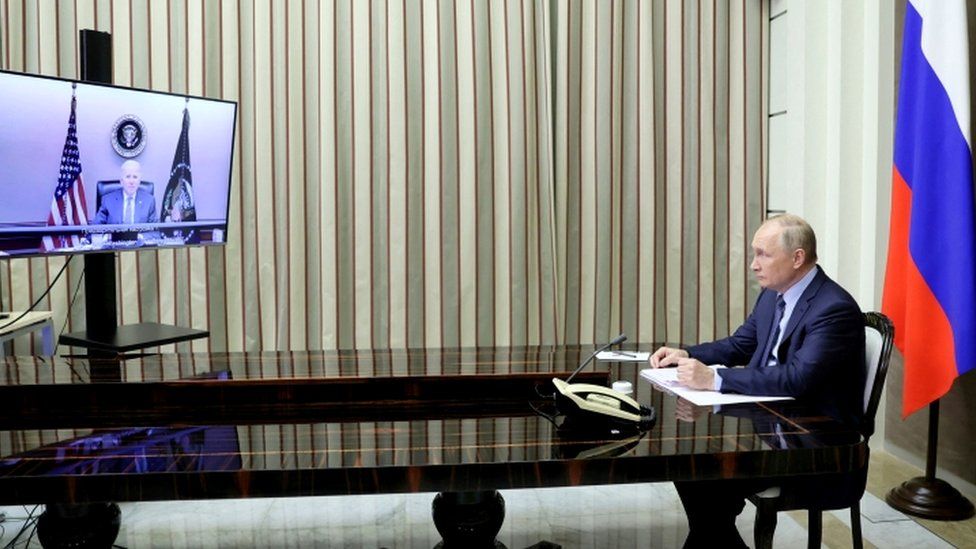 IMAGE SOURCE,REUTERS
IMAGE SOURCE,REUTERSThe US had offered to start talks on limiting short- and medium-range missiles as well as on a new treaty on intercontinental missiles. Russia wanted all US nuclear arms barred from beyond their national territories.
Russia had been positive towards a proposed "transparency mechanism" of mutual checks on missile bases - two in Russia, and two in Romania and Poland.
